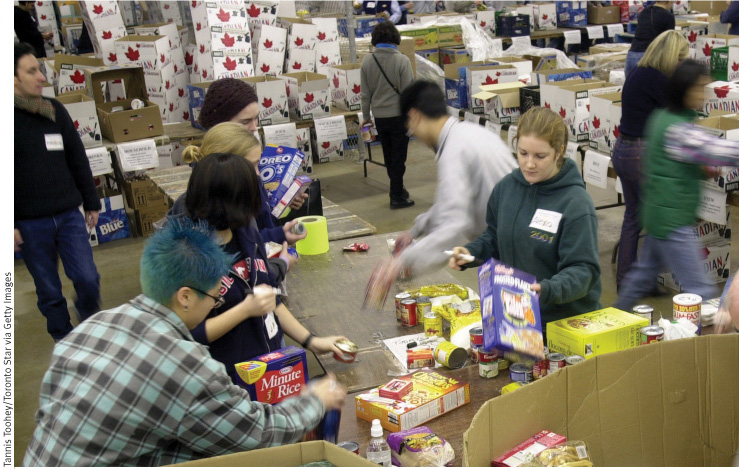The Economics of the Welfare State
18
What the welfare state is and the rationale for it
What defines poverty, what causes poverty, and the consequences of poverty
How income inequality in Canada has changed over time
How programs like Old Age Security affect poverty and income inequality
The special concerns presented by health care insurance
Why there are political differences and debate over the size of the welfare state
FEEDING MORE THAN 800 000

EVERY ONCE IN A WHILE, ESPEcially around holidays, you have probably heard Food Banks Canada asking for donations and organizing food drive campaigns. Why are food banks calling for such help? Each month, more than 800 000 Canadians seek help from food banks across the country because they face difficulty feeding themselves and their families.
The problem of hunger is not new. It has been around for centuries. The stunning fact is that the number of Canadians getting help from food banks has been rising. According to Food Banks Canada, the average number of people who turned to a food bank rose from 675 735 per month in 2008 to 833 098 in 2013. Unfortunately, in 2013 this rising demand for food bank services forced half of all food banks to cut back on the amount of food provided to each household.
Who seeks help from food banks? According to the Hunger Count 2013 by Food Banks Canada, the people who turned to a food bank came from several different backgrounds including single-
36.4% of those turning to food banks are children and youth
4.3% of adults helped are over age 65
11.3% of people assisted are Aboriginal
50% of households helped receive social assistance (welfare)
11.5% have income from current or recent employment
Source: Food Banks Canada.
All levels of government in Canada provide assistance to the less fortunate, either funding charitable organizations or giving direct assistance to those in need. The general consensus is that government should be in charge of providing support to financially troubled families.
It’s the same around the world. Modern governments, especially in wealthy countries, devote a large chunk of their budgets to health care, income support for the elderly, aid to the poor, and other programs that reduce economic insecurity and, to some degree, income inequality. The collection of government programs devoted to these tasks is known as the welfare state.
We start this chapter by discussing the underlying rationale for welfare state programs. Then we describe and analyze the two main kinds of programs operating in Canada: income support programs, such as support for seniors via Canada/Quebec Pension Plan, Old Age Security, and Guaranteed Income Supplement payments, and health care programs—